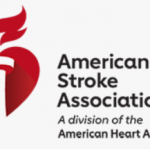The commercial weight loss industry is a $100 billion+ industry that is rife with untrue advertising, and can lead people to believe that a program or supplement is going to result in weight loss that is unrealistic, without any scientific merit, and/or in a potentially harmful way. This chapter of the 2020 Canadian Obesity Guidelines sorts fact from fiction on commercial products and programs.
In terms of weight loss products/supplements, the evidence is clear:
None of the weight loss products from the commercial industry that were studied in randomized control trials of more than 12 weeks duration were shown to produce clinically meaningful weight loss. Therefore, the guidelines DO NOT RECOMMEND the use of over the counter commercial weight loss products for obesity management.
Frighteningly, some supplements have been found to contain prescription medications. In fact, 700 American supplements were found to contain unlabeled pharmaceutical ingredients in a recent review, and drug effects and interactions of supplements were found to be responsible for over 23,000 emergency room visits per year in the US.
The Guidelines specifically review the data for some of the more popular supplements, including PGX, Garcinia cambogia, green tea extract, chromium picolinate, chitosan, conjugated linoleic acid, and glucomannan – NONE of which showed any meaningful benefit.
Some commercial programs can be used to facilitate modest weight loss, including Jenny Craig, Nutrisystem, Optifast, Slimfast, Weight Watchers. With the exception of Slimfast, these particular programs have also shown mild improvement in blood sugar control in people with diabetes over a short term period.
This chapter specifically reviews several other modalites and programs, including acupuncture , cryolipolysis, whole body vibration therapy, Curves, Ideal protein, TOPS and Overeaters Anonymous. Have a look at the chapter for specific details on each of these and others. Some have not been studied sufficiently to draw any clear conclusions, some have conflicting results, and some have not been studied at all.
The guidelines advise to be leery of weight loss programs that promise:
- weight loss without diet or exercise
- weight loss while eating as much food as you want
- spot reduction of weight from particular body locations
- overly rapid weight loss (eg 30lb in 30 days)
- include before and after photos that seem ‘too good to be true’
If you are considering a commercial program, here are some important things to consider in evaluation of whether it is safe and potentially successful:
- does it provide a combination of nutrition, physical activity and behaviour change support?
- are the weight loss goals realistic? (0.5-1kg or 1-2lb per week)
- Is it a long-term weight maintenance approach? (to avoid weight regain)
- Has scientific study shown that it is safe?
- Is the cost reasonable?
NOTE: This blog is not intended to be a full synopsis of the chapter. There is a wealth of information in this chapter that is beyond the scope of one blog post. I encourage everyone to read the recommendations and key messages in full, and to dig in to the entire chapter!
Stay tuned for more on the Obesity Guidelines in coming weeks!
Share this blog post using your favorite social media link below!
Follow me on twitter! @drsuepedersen
www.drsue.ca © 2020












